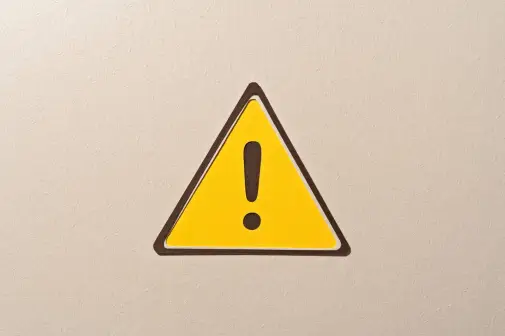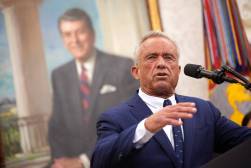Albany center has been leader in bridging tech, gov’t for two decades

The Internet just celebrated its 25th birthday this past week.
Not far behind, the Center for Technology in Government has now surpassed the two-decade mark as a collaborative research effort to bridge the worlds of management, IT and government.
That the center came into existence in the early days and years of the Net — before it was even commercially available — is hardly a coincidence. Founding Director Sharon Dawes said a group of IT professionals, including herself, began thinking about how the impact of new-found technology and wanted to shepherd along the next generation of leaders to use it effectively.
“We wanted to create some kind of capacity to experiment with technology,” she said.
Initially, the center, housed at the University of Albany within the State University of New York, honed in on technology use by governments in New York. Over time, the scope of its work has widened to include all levels of government and to collaborate with a host of federal U.S. agencies, not to mention government entities abroad on the most pressing technology challenges of the day including open government and data sharing.
Dawes said early on there was interest from state agencies and other stakeholders for her group to experiment with technology. The tough part was getting funding. “After being said no to so many times, we decided to go forward anyway,” she explained. Grants and other funding vehicles would come later.
The original focus on New York came from the fact that then-Gov. Mario Cuomo tapped the IT leaders involved to examine the increasing role of IT and to study it, especially as it connected to public agencies. The center’s current director, Theresa Pardo, who became part of CTG early on, called their work “risk-free experimentation.”
“It was one of the earliest public-private partnerships,” she said. “Now, we talk all the time about incubators for innovation. That’s what the center was, essentially.”
A key moment happened in 1995 when the center won an Innovation in American Government award from the Ford Foundation for its unique partnerships with businesses and government. This award brought with it recognition and a cash award that enabled CTG’s early staff of five to do more programs.
In the next few years, other grants from organizations outside of academia and the research sector came as well, which further aided the center’s growth in stature and scope.
Open government and open sharing of data have, especially lately, become the source of much of the work done by CTG. Pardo said the center was heavily involved in a New York-based data cooperative during the 1990s to facilitate better sharing. The co-op served as a clearinghouse for information, as lots of money was being spent for agencies to collect data that was virtually the same.
Since, CTG has expanded well outside of New York to advise agencies on not only how to manage information but how to share it with citizens so there are “data management cultures.”
“It’s necessary to make government data not only more easily accessible but also easily consumable,” Pardo said.
To that end, CTG created a value asset tool that governments can — and increasingly are — using. The idea of the tool is to evaluate which format would be best to interact with the public when it comes to given subjects of the three open government format styles: holding a challenge, releasing data or hosting a town hall.
“Your average government manager hasn’t been trained on how to engage with citizens,” she said. “There isn’t coursework that tells them, ‘Here’s how to run a challenge.’ We’ve found that many times, members of government aren’t trying to hide things; they just don’t have the proper tools to share information.”
The Transportation Department, often considered an exemplar in terms of open government, has used CTG’s tool extensively to better share resources with the public in appropriate forms for the audience and nature of the information involved. The center also has joined forces with NSF, running a workshop in D.C. recently with 40 government officials to foster better use of technology.
Related to open government, the center in Albany has also been a leader in creating ways for government agencies to better share and collaborate. Dawes said this has been an issue since she first became founding director and it continues to plague government departments. In some cases, the agency’s mission takes all of their resources and collaboration takes a back seat. Other times, the information itself is “problematic,” she said, in that it’s a form that’s of limited value to most and hard for all others to locate and use.
Land records are a great example, and an area in which the center has tried to use technology to streamline processes as opposed to stifle it. The Environmental Protection Agency is another agency with whom Dawes and her colleagues have conducted research. Air Now is an air quality monitoring network that collects data constantly and then distributes air quality distinctions widely to places such as USA Today. CTG teamed up with government agencies in the United States and foreign agencies, such as in Shanghai, to test out new ways of using the air quality measures.
Over the years, Dawes said one of her favorite projects revolved around a fellowship program that, in various installments, involved 80 different Ph.D. students from 40 countries. The students gathered for weeklong summits of sorts to explore technology in government.
Though the center has remained relatively small in staff, with about 25 employees, efforts like that allow it to bring more expertise and personnel into the fold. Going forward, Pardo has been involved in creating a number of consortia to spread CTG’s work to a larger scale. For instance, a global consortium will examine different ways that cities — a growing unit of government — across the world can flourish and work with academics and IT professionals.
In Dawe’s mind, she’s beyond proud the center she helped to start is still going strong.
“We’ve kept the underlying philosophy we started with,” she said. “The first guiding principle is that you can’t fail if you learn something. We encourage researchers and students to think of everything in that way. And we also try to abide by the idea that we should share what we learn. We made this critical from the beginning. It takes more work, but there’s a great value.”






